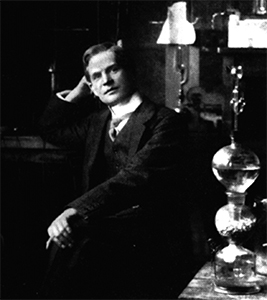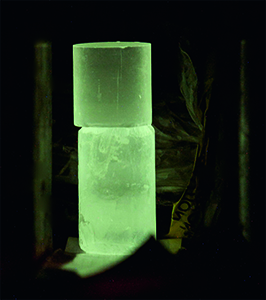Celebrating 100 years of isotope science
 It’s 100 years since isotopes were discovered at Glasgow by chemist Fredrick Soddy.
It’s 100 years since isotopes were discovered at Glasgow by chemist Fredrick Soddy.
Soddy, who lectured at the University before the First World War, introduced isotopes to the world in the journal Nature on 4 December 1913.
Since then isotope science has transformed science, engineering and medicine, and there is scarcely an aspect of biological, medical, chemical, earth or nuclear sciences that does not utilise isotopes. Soddy received the Nobel Prize in Chemistry in 1921 for this work.
Born in Eastbourne and educated at Oxford, Soddy spent two years in Canada working with Sir Ernest Rutherford on radioactivity, and then with Sir William Ramsay at University College London. He moved to Glasgow in 1904 as a lecturer in Physical Chemistry and Radioactivity, and it was during his ten years at the University, while working with collaborators including laboratory assistant Alexander Fleck (who later rose to become Chairman of ICI), that he completed his most important research, into the chemistry of radioactive elements.
 He realised that a single chemical element could occur as atoms with different atomic weights, with different nuclear properties, such as radioactive half-life. This reconciled the periodic table with the newly discovered phenomena of radioactivity and atomic transformation.
He realised that a single chemical element could occur as atoms with different atomic weights, with different nuclear properties, such as radioactive half-life. This reconciled the periodic table with the newly discovered phenomena of radioactivity and atomic transformation.
This article was first published in November 2013.

